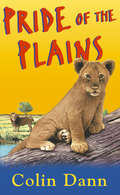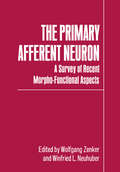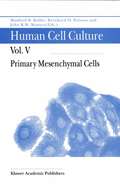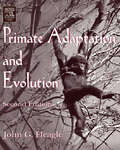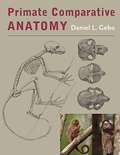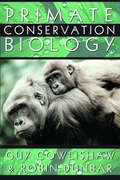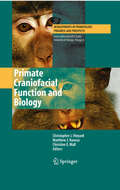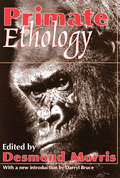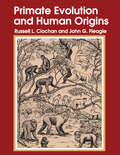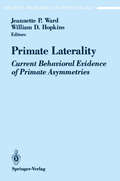- Table View
- List View
Preservation of Surfactant Formulations
by F. MorpethMicrobes are known to live in an enormous range of environments. Their ability to survive and proliferate in diverse industrial systems is often a surprise to those not exposed to these problems in their work. These systems contain a range of potential carbon sources, one common theme being surfactants. Surfactants are often not the components most prone to spoilage since some systems contain highly susceptible natural components, such as starch and xanthum gum, but the surfactant is a key part of the formulation, and its extensive breakdown usually means that the material is beyond recovery. The aim of this book is to describe in detail all aspects of the preservation of surfactant containing materials. The book should be viewed as being in three discrete sections. • chapters 1-5 deal with and summarise essential background information • chapters 6-11 discuss in detail various end use applications • chapters 12-15 outline the regulatory and toxicology implication associated with the safe handling of preservatives Given the format of the book there is inevitably some duplication of information in the middle section with different authors describing essentially the same phenomena but on different substrates. I hope the reader will find that although different chapters touch on the same topics the information around these areas is sufficiently different to justify their inclusion in this book and to be of interest. It should also demonstrate what can be the most useful source of information, the hard practical experience of the authors.
Presynaptic Receptors and Neuronal Transporters: Official Satellite Symposium to the IUPHAR 1990 Congress Held in Rouen, France, on 26–29 June 1990
by S.Z. LANGER, A.M. GALZIN, J. COSTENTINAdvances in the Biosciences, Volume 82: Presynaptic Receptors and Neuronal Transporters documents the proceedings of the Official Satellite Symposium to the IUPHAR 1990 Congress held in Rouen, France on June 26-29, 1990. The first part of this book deals with the extensive and still increasing list of presynaptic release-modulating auto and heteroreceptors, emphasizing the various subtypes of presynaptic receptors that are characterized by functional studies, both in vitro and in vivo, using a number of experimental approaches. The next chapters are devoted to the molecular pharmacology of presynaptic receptors, of which can interfere with G proteins and modify the activity of adenylate cyclase, guanylate cyclase, or protein kinase C. The purification and molecular biology of transporter systems, including cloning and sequencing of the neuronal sodium-ion coupled GABA transporter are also discussed. This compilation concludes with insights on the function of presynaptic receptors and neuronal transporters both in the periphery and in the CNS, as well as their ubiquitous locations and physiological roles. This publication is a good reference for students and individuals researching on the presynaptic autoreceptors and neurotransmitters.
Prevention of Alcohol Abuse
by Peter M. Miller Ted D. NirenbergThe abuse of alcohol presents a major health problem throughout the world. Until recently both clinical and research efforts have been geared toward treatment and rehabilitation of alcoholism. With the growing num ber of problem drinkers entering treatment, the need for a better under standing of the prevention of alcohol abuse has become increasingly evi dent. Although still in its infancy, the field of alcoholism prevention is growing at a rapid rate. Increasing numbers of behavioral scientists through out the world are conducting or planning prevention projects. Policy plan ners, school administrators, military agencies, community groups, state and local alcoholism agencies, and industries are initiating alcohol abuse preven tion programs with fervor. Legislators at all levels of government are also developing a keen interest in legislation aimed at reducing the extent of problem drinking. This book represents one of the first systematic attempts to compile a comprehensive text on the prevention of alcohol abuse. Many of the con tributors to Prevention 0/ Alcohol Abuse have international reputations that strengthen their understanding of the complex nature of prevention. By providing a critical review of the current knowledge about prevention, the text will serve to stimulate and lay the groundwork for further prevention efforts. We thank all of the chapter authors for their excellent contributions. It is through their efforts that the field will thrive. Our appreciation also is expressed to Leonard Pace, formerly of Plenum Press, for his encourage ment and helpful comments in the development of the text.
A Prickly Affair: My Life with Hedgehogs
by Hugh WarwickAn ode to the humble hedgehog from a lifelong obsessive. Exploring what hedgehogs actually do and what they tell us about our need for wildlife and the changes in the British countryside, The Hedgehog's Dilemma travels from the Outer Hebridees via the American Hedgehog Festival, Sonic the Hedgeghog and Mrs Tiggywinkle, to a field in Shropshire, where Hugh Warwick's love of hedgehogs began.
Pride and Joy the Event Horse: Book 7 (Tilly's Pony Tails #7)
by Pippa FunnellMeet Tilly Redbrow, who doesn't just love horses - she lives, breathes and dreams them too! When Tilly sees Angela, the owner of Silver Shoe Farm, reunited with her beloved event horse, Pride and Joy, she knows they're destined to be together. So why is Angela so resistant to competing? Tilly is determined to find out...From Pony Club to riding for the British team, and for every girl who has ever longed for a pony of her own, these delightful, warm and engaging stories are packed with Pippa Funnell's expert advice on everything you ever wanted to know about horses.
Pride and Joy the Event Horse (Pippa's Pony Tales #7)
by Pippa FunnellBook 7 in a series of heart-warming pony tales packed with expert advice from three times Olympic medallist and Grand Slam winner, Pippa Funnell, on everything you ever wanted to know about horses.With the help of Tilly and the team at Silver Shoe Farm, Magic Spirit has made a brilliant recovery and looks like he could become a top competition horse. Tilly is fascinated when Angela shares with her what it's like to have a partnership with an eventing superstar as they visit her own favourite horse, Pride and Joy. Collect all 18 titles in this series of irresistible, uplifting pony adventures, packed with expert, up-to-date advice from the author as well as a helpful glossary and black and white illustrations.
Pride Of The Plains (The\lions Of Lingmere Ser.)
by Colin DannHuru and Kimya have formed a small pride with their friends, Battlescars and Blackmane and six cubs have been added to the pride's number. Attacked by an elephant, Moja, the eldest, is seperated from his family and must now learn to survive on his own. Meanwhile as leaders of the pride, Battlescars and Blackmane - face new challenges to their authority, and the Game Park itself is in peril, when a tremendous fire sweeps across it, killing many of the animals.
The Primary Afferent Neuron: A Survey of Recent Morpho-Functional Aspects
by Wolfgang Zenker Winfried L. NeuhuberThis book is based on contributions presented at the symposion "The Primary Afferent Neuron: A survey oj recent morpho:functional aspects. H held in Zurich on March 24th. 1988 in connection with the 83rd Congregation of the German Anatomical SOCiety. Members of the Anatomical Society as well as non-member researchers were invited to join a circle of specialists to discuss the topiC of primary afferents. In addition. some aspects which had not been dealt with at the Symposion because of shortage of time are represented by invited reviews included in this volume. As sCientific research on the primary afferent neuron is so extensive. it is impossible to take inventory of all the present activities on this subject. This book attempts to provide an overview of various aspects of high actuality and. in particular. shows how morphological research contributes to our present -day concepts of the primary afferent neuron. Although fundamental knowledge on morphology and physiology of the spinal ganglion cell seems to be well established. many questions of the past and the present still await conclusive answers. Thus. many question-marks deter mine the conceptual layout of this book (Fig. 1): First. the peripheral sensory field. and. in particular, the peripheral sensory receptors are discussed.
The Primary Auditory Neurons of the Mammalian Cochlea (Springer Handbook of Auditory Research #52)
by Alain Dabdoub Bernd Fritzsch Arthur N. Popper Richard R. FayThis volume details the essential role of the spiral ganglion neurons. The volume elucidates and characterizes their development, their environment, their electrophysiological characteristics, their connectivity to their targets in the inner ear and the brain, and discusses the potential for their regeneration. A comprehensive review about the spiral ganglion neurons is important for researchers not only in the inner ear field but also in development, neuroscience, biophysics as well as neural networks researchers. The chapters are authored by leading researchers in the field.
Primary Mesenchymal Cells (Human Cell Culture #5)
by Bernhard Ø. Palsson F. Koller John MastersThe human body contains many specialized tissues that are capable of fulfilling an incredible variety of functions necessary for our survival. This volume in the Human Cell Culture Series focuses on mesenchymal tissues and cells. The in vitro study of mesenchymal cells is perhaps the oldest form of human cell culture, beginning with the culturing of fibroblasts. Fibroblasts have long been generically described in the literature, arising from many tissue types upon in vitro cell culture. However, recent studies, many enabled by new molecular biology techniques, have shown considerable diversity in fibroblast type and function, as described within this volume. Mesenchymal tissue types that are described within include bone, cartilage, tendons and ligaments, muscle, adipose tissue, and skin (dermis). The proper function of these tissues is predominantly dependent upon the proper proliferation, differentiation, and function of the mesenchymal cells which make up the tissue. Recent advancements in primary human mesenchymal cell culture have led to remarkable progress in the study of these tissues. Landmark experiments have now demonstrated a stem cell basis for many of these tissues, and, furthermore, significant plasticity and inter-conversion of stem cells between these tissues, resulting in a great deal of contemporary excitement and controversy. Newly-developed mesenchymal cell culture techniques have even lead to novel clinical practices for the treatment of disease.
The Primary Structure of Transfer RNA
by Tat Yana VenksternThe study of the primary structure of nucleic acids, i. e. , the determination of the nucleotide sequence in ribosomal, transfer, and messenger types of RNA and in DNA, is an essential preliminary to the attempt to correlate the structures of these compounds with their functions. This is one of the most urgent problems in molecular biology, for until it is solved it is im possible to understand fully the mechanisms of fundamental living processes. Research has naturally tended to concentrate on the nucleic acids of smallest molecular weight, namely the transfer RNAs, and tremendous progress has been made in recent years in the unraveling of their structure. In 1958-1959, when structural investigation was still in its infancy, it was even doubted whether the structure of any transfer RNA could be deter mined. No methods of isolating homogeneous preparations were available, and it was uncertain whether the very slight physical and chemical differences between tRNAs of different specificity would be sufficient to allow successful fractionation. When the first enriched preparations were obtained, there arose the problem of whether it was possible to determine the nucleotide sequence having regard to the limited number of heterogeneous structural elements present in tRNA. These doubts were resolved in 1965, when the structure of the first nucleic acid, alanine-specific transfer RNA, was unraveled in Holley's laboratory.
Primate Adaptation and Evolution
by John G. FleagleJohn Fleagle has improved on his 1988 text by reconceptualizing chapters and by bringing new findings in functional and evolutionary approaches to bear on his synthesis of comparative primate data. The Second Edition provides a foundation upon which students can develop an understanding of our primate heritage. It features up-to-date information gained through academic training, laboratory experience and field research. This beautifully illustrated volume provides a comprehensive introductory text explaining the many aspects of primate biology and human evolution.Key Features* Provides up-to-date information about many aspects of primate biology and evolution* Contains a completely new chapter on primate communities* Presents totally revised chapters on primate origins, early anthropoids, and fossil platyrrhines* Includes an updated glossary, new illustrations, and a revised Classification of Order Primates* Succeeds as the best introductory text on primate evolution because it synthesizes and allows access to primary literature
Primate Anti-Predator Strategies (Developments in Primatology: Progress and Prospects)
by Sharon Gursky-Doyen K. A. I. NekarisThis volume details the different ways that nocturnal primates avoid predators. It is a first of its kind within primatology, and is therefore the only work giving a broad overview of predation – nocturnal primate predation theory in particular – in the field Additionally, the book incorporates several chapters on the theoretical advances that researchers studying nocturnal primates need to make.
Primate Behavior and Sociobiology: Selected Papers (Part B) of the VIIIth Congress of the International Primatological Society, Florence, 7–12 July, 1980 (Proceedings in Life Sciences)
by A. B. Chiarelli Robert CorrucciniThe VIIIth International Congress of the International Prirnatological Society was held from 7 through 11 July 1980 in Florence, Italy, under the auspices of the host institution, the Istituto di Antropologia of the University of Flor~nce. More than 300 papers and abstracts were presented either at the main Congress or in 14 pre-Congress symposia the week earlier (so scheduled to avoid conflicting with either the main invited lectures or the contributed paper sessions). This volume consists of the contributed papers concerning primate behavior, with special emphasis on those social aspects that reflect on or affect primate biology. Clearly, this is one of the more important and popular subdisciplines in primatology today. We have thus restricted the subject, in agreement with the publishers, in order to ensure a successful and useful volume that is likely to be generally noticed and widely available, as these up-to-date contributions deserve. Furthermore, we have compiled this volume in a fairly new way for congress proceedings. In view of space limitations, and the need to guarantee a high-quality and sufficiently specialized book, we subjected all manuscripts to a four-level internal review process and selected only the best 23 of the 50 submissions. We favored natural-observation work over captive studies. This rejection rate of 54% exceeds that of almost all reviewed scholarly journals.
Primate Biogeography: Progress and Prospects (Developments in Primatology: Progress and Prospects)
by Shawn M. Lehman John G. FleaglePrimate Biogeography is a subject rarely addressed as a discipline in its own right. This comprehensive source introduces the reader to Primate Biogeography as a discipline. It highlights the many factors that may influence the distribution of primates, and reveals the wide range of approaches that are available to understanding the distribution of this order. The biogeography of primates in the past is a major component of our understanding of their evolutionary history and is an essential component of conservation biology. This book will appeal to primatologists, physical anthropologists, zoologists, and undergraduates in these areas.
Primate Comparative Anatomy (PDF)
by Daniel L. GeboWhy do orangutan arms closely resemble human arms? What is the advantage to primates of having long limbs? Why do primates have forward-facing eyes? Answers to questions such as these are usually revealed by comparative studies of primate anatomy. In this heavily illustrated, up-to-date textbook, primate anatomist Daniel L. Gebo provides straightforward explanations of primate anatomy that move logically through the body plan and across species. Including only what is essential in relation to soft tissues, the book relies primarily on bony structures to explain the functions and diversity of anatomy among living primates. Ideal for college and graduate courses, Gebo's book will also appeal to researchers in the fields of mammalogy, primatology, anthropology, and paleontology. Included in this book are discussions of: * Phylogeny* Adaptation* Body size* The wet- and dry-nosed primates* Bone biology* Musculoskeletal mechanics* Strepsirhine and haplorhine heads* Primate teeth and diets* Necks, backs, and tails* The pelvis and reproduction* Locomotion* Forelimbs and hindlimbs* Hands and feet* Grasping toes
Primate Conservation Biology (Conservation Biology Ser.)
by Guy Cowlishaw Robin I. DunbarFrom the snub-nosed monkeys of China to the mountain gorillas of central Africa, our closest nonhuman relatives are in critical danger worldwide. A recent report, for example, warns that nearly 20 percent of the world's primates may go extinct within the next ten or twenty years. In this book Guy Cowlishaw and Robin Dunbar integrate cutting-edge theoretical advances with practical management priorities to give scientists and policymakers the tools they need to help keep these species from disappearing forever. Primate Conservation Biology begins with detailed overviews of the diversity, life history, ecology, and behavior of primates and the ways these factors influence primate abundance and distribution. Cowlishaw and Dunbar then discuss the factors that put primates at the greatest risk of extinction, especially habitat disturbance and hunting. The remaining chapters present a comprehensive review of conservation strategies and management practices, highlighting the key issues that must be addressed to protect primates for the future.
Primate Craniofacial Function and Biology (Developments in Primatology: Progress and Prospects)
by Chris Vinyard Matthew J. Ravosa Christine WallPrimate Craniofacial Function and Biology is an integrative volume with broad coverage of current research on primate craniofacial biology and function. Topic headings include: the mammalian perspective on primate craniofacial form and function, allometric and comparative morphological studies of primate heads, in vivo research on primate mastication, modeling of the primate masticatory apparatus, primate dental form and function, and palaeoanthropologic studies of primate skulls. Additionally, the volume includes introductory chapters discussing how primatologists study adaptations in primates and a discussion of in vivo approaches for studying primate performance. At present, there are no texts with a similar focus on primate craniofacial biology and no sources that approach this topic from such a wide range of research perspectives. This breadth of research covered by leaders in their respective fields make this volume a unique and innovative contribution to biological anthropology.
Primate Ethology
by Pendleton HerringThis is a groundbreaking workwhich brought together studiesof monkeys and apes from boththe laboratory and the field. Manybroad aspects of primate life,including facial expressions,sexual signals, grooming, play,social organization and parental care, are covered bythe contributors and provided a whole new approach toprimate behavior.
Primate Ethology
by Pendleton HerringThis is a groundbreaking workwhich brought together studiesof monkeys and apes from boththe laboratory and the field. Manybroad aspects of primate life,including facial expressions,sexual signals, grooming, play,social organization and parental care, are covered bythe contributors and provided a whole new approach toprimate behavior.
Primate Evolution and Human Origins
by Russell L. CiochonPrimate Evolution and Human Origins compiles, for the first time, the major ideas and publications that have shaped our current view of the evolutionary biology of the primates and the origin of the human line. Designed for freshmen-to-graduate students in anthropology, paleontology, and biology, the book is a unique collection of classic papers, culled from the past 20 years of research. It is also an important reference for academicians and researchers, as it covers the entire scope of primate and human evolution (with an emphasis on the fossil record). A comprehensive bibliography cites over 2000 significant articles not found in the main text.
Primate Evolution and Human Origins
by Russell L. CiochonPrimate Evolution and Human Origins compiles, for the first time, the major ideas and publications that have shaped our current view of the evolutionary biology of the primates and the origin of the human line. Designed for freshmen-to-graduate students in anthropology, paleontology, and biology, the book is a unique collection of classic papers, culled from the past 20 years of research. It is also an important reference for academicians and researchers, as it covers the entire scope of primate and human evolution (with an emphasis on the fossil record). A comprehensive bibliography cites over 2000 significant articles not found in the main text.
Primate Evolutionary Biology: Selected Papers (Part A) of the VIIIth Congress of the International Primatological Society, Florence, 7–12 July, 1980 (Proceedings in Life Sciences)
by A. B. Chiarelli R. S. CorrucciniThe VIIIth International Congress of the International Prirnatological Society was held from 7 through 11 July 1980 in Florence Italy, under the auspices of the host institution, the Istituto di Antropologia of the University of Florence. More than 300 papers and abstracts were pre sented either at the main Congress or in 14 pre-Congress symposia the week earlier (so scheduled to avoid conflict with either the main invited lectures or the contnbuted paper sessions). This volume consists of the contributed papers on primate evolu tionary biology, primarily functional morphology, evolution, and pale ontology. This is a coherent (though broad) and important sub field of primatology. We have thus focused the subject, in agreement with the publishers, to help ensure a successful and useful volume, befitting these very current contributions from the biennal meeting of the Inter national Primatological Society. Furthermore, we have compiled this volume in a fairly unprecedented manner for congress proceedings. In view of space and budget limitations, and the need to guarantee a high-quallty book with appeal for specialists, we subjected all manuscript to a four-stage internal review process and selected only the best 13 of 31. This rejection rate of 58% compares with the more discriminating reviewed scholarly journals. Too often primatological or anthropological proceedings have been heterogeneous, large, unselective volumes that, at least recently, have repeatedly lost money for the publishing house (in sometimes spectacular amounts).
Primate Laterality: Current Behavioral Evidence of Primate Asymmetries (Recent Research in Psychology)
by Jeannette P. Ward William D. HopkinsThis book arrays recent research on the neural and behavioral lateralization of the brain relying heavily on animal modes. The authors employ the comparative method to enhance our understanding of behavior, specifically through hand use and "handedness" by drawing comparisons with studies involving primates. Topics discussed include Patterns of Lateralized Behavior in Prosimians; Behavioral Lateralization in Language-Trained Chimpanzees; Patterns of Handedness: Comparative Study of Nursery School Children and Captive Gorillas; and Rotational Behavior in Children and Adults. It is the first book of its kind devoted entirely to the question of behavioral asymmetries in all primates and thus presents a milestone as it recognizes the accumulating evidence of asymmetry and lateralized behavior in the non-human nervous system.
Primate Life Histories, Sex Roles, and Adaptability: Essays in Honour of Linda M. Fedigan (Developments in Primatology: Progress and Prospects)
by Urs Kalbitzer Katharine M. JackProfessor Linda M. Fedigan, Member of the Order of Canada and a Fellow of the Royal Society of Canada, has made major contributions to our understanding of the behavioural ecology of primates. Furthermore, Linda Fedigan pioneered and continues to advance scholarship on the role of women in science, as well as actively promoting the inclusion of women in the academy. A symposium in honour of her career was held in Banff (Alberta, Canada) in December 2016, during which former and current students and collaborators, as well as scientists with similar research interests, presented and discussed their work and their connections to Linda Fedigan. These presentations and discussions are here presented as chapters in this festschrift. The original works presented in this book are organized around four major research areas that have been greatly advanced and influenced by Linda Fedigan:Primate life historiesSex roles, gender, and sciencePrimate-environment interactionsPrimate adaptation to changing environments






